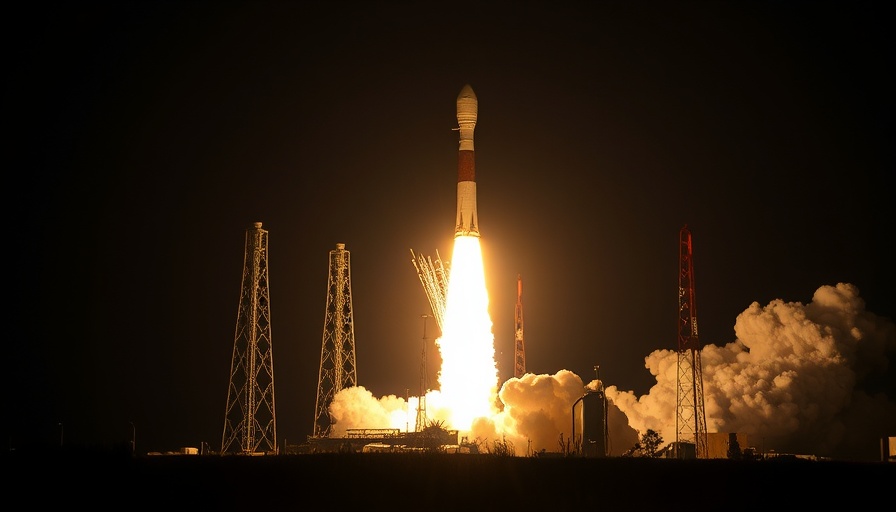
SpaceX Reinforces Its Dominance in Satellite Launches
On February 10, 2025, SpaceX soared once more into the night sky, showcasing its prowess in the realm of satellite launches. With a Falcon 9 rocket lifting off from Vandenberg Space Force Base in California at precisely 9:09 p.m. EST, SpaceX delivered yet another significant boost to its Starlink satellite constellation by deploying 23 new broadband satellites into low Earth orbit. This mission marks a continued effort to enhance global internet access through satellite technology.
The Innovation Behind the Falcon 9
The Falcon 9 rocket has become synonymous with reliability and efficiency in the aerospace industry. This particular booster has now completed 23 successful launches and landings, becoming a cornerstone of SpaceX's ambitious lineup of missions. After the initial lift-off, the first stage of the rocket made a successful return to Earth, landing gently on the Pacific Ocean’s surface aboard the drone ship "Of Course I Still Love You." This reuse of rockets not only reduces costs but also underscores SpaceX’s innovative approach to space travel.
Building a Global Communication Network
As SpaceX onboarded the 23 new satellites, the total number of operational Starlink satellites surpassed 6,900, making it the largest constellation of satellites in space. The persistent expansion of Starlink is not simply about increasing satellite numbers; it is part of a broader vision to provide reliable high-speed internet access to underserved areas worldwide. As more satellites are deployed, the effectiveness and reach of this network are expected to grow exponentially, further bridging the digital divide.
Future Predictions on Satellite Connectivity
The implications of an expanded Starlink network are significant. Experts suggest that with nearly 12 Starlink launches slated for this year alone, users across remote regions of the globe could gain internet access in ways previously deemed impossible. Predictions indicate that as this network matures, we might see not just enhanced personal connectivity, but also potential advancements in sectors such as telemedicine, remote education, and even disaster response initiatives.
Addressing Concerns Over Space Debris
While the expansion of Starlink presents numerous advantages, it is important to address the concerns related to space debris. The growth of satellite constellations raises questions about the long-term sustainability of space. As the number of satellites in orbit increases, so too does the risk of collisions, which could exacerbate the space debris problem. SpaceX and other companies are currently exploring potential solutions, including satellite design changes and active debris removal technologies, to mitigate these risks.
Public Interest in Space Exploration
The recent launch has rekindled public interest in space exploration and technology. With the continuous achievements of SpaceX, interest in the future of space-ready careers and educational paths in engineering and technology isexpected to rise. As more missions succeed and innovations emerge, young people may feel inspired to dream bigger and engage with STEM disciplines in unprecedented ways.
 Add Row
Add Row  Add
Add 




Write A Comment